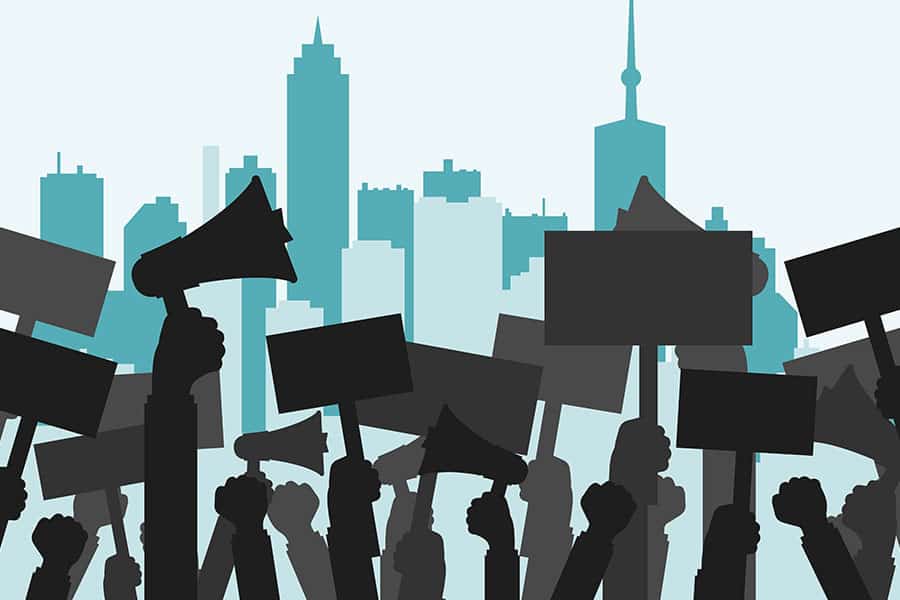This has been a summer of protests, unrest, and social risk. I think protests will continue into the fall, through the election, and probably beyond. Whether or not your organization takes a stand on any particular issue, protests may still come to you. What we’ve seen in recent months is these gatherings can occur at any time, anywhere, and they can escalate quickly.
We’ve talked before about some of the tactics you can take when you’re aware that a protest against you is planned. In those instances, the protesters are coming because of something specific your organization did or did not do. Instead of focusing on those kinds of protests, I want to talk about a greater social risk. Spontaneous, organic protests that we’ve been seeing in communities all around the country pose a social risk. These occur without much warning. Although they’re often not targeting any specific business or organization, they can and do still put organizations at risk.
So, what do you do when that protest comes to you?
First of all, while you can’t prevent a protest, you can plan for it. If you can, designate an area for protesters to gather. You should coordinate with law enforcement and your own security team to have a plan ready if a protest escalates. You should communicate your plan to your employees. They need to know what to say. They need to know who to call for help if a peaceful protest becomes a more volatile situation.
Communicate the Plan
Advise your teams not to engage the protesters physically or verbally – you want to avoid confrontation, not create it. You probably won’t be able, from a First Amendment standpoint, to prevent your employees from participating in a protest. However, it’s probably best that your leadership team stays above the fray. There is increased social risk if a company leader acts or makes statements that go against the company’s values.
You should plan now to have a spokesperson ready to address questions when the media arrives. I don’t think you need to issue a statement, but you should have a message ready to go. Focus on being factual about what’s going on and how the issues surrounding this particular protest may or may not be consistent with your values.
Finally, come up with ways you, as leaders, could bring people together to have open, honest conversations about the underlying issues. These conversations can lead to real change. Protesters are demonstrating to change policies or conditions, not just to be seen and heard.
The protest itself will come and go, but the social risk will remain. Whether or not a protest forces the conversation, as a leader and strategic communicator, you have the ability to continue having constructive dialogues with your employees and your community that both reinforce your values and best serve the people who matter most.


